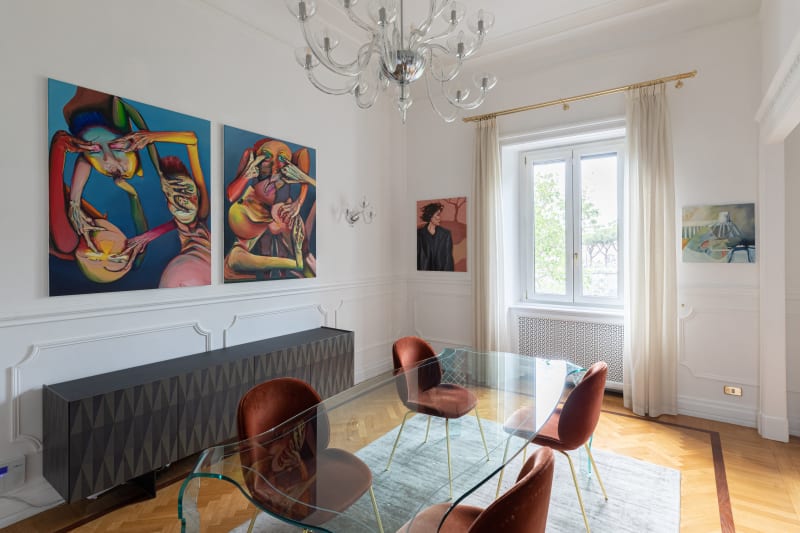The exhibition She Came to Stay borrows its title from Simone de Beauvoir’s groundbreaking debut novel, first published in 1943. The book, a semi-autobiographical exploration of a love triangle (ménage à trois), delves into complex psychological dynamics, freedom, and existential responsibility, as individuals are forced to see themselves through the eyes of the Other.
More than just a narrative on romantic entanglement, Beauvoir’s novel laid the groundwork for her lifelong examination of the human condition, especially that of women, through the lens of existentialist thought. Deeply influenced by Martin Heidegger, she wrote: “Existing is daring to throw oneself into the world.” For Beauvoir, time was central to existence—life becomes an act of resistance against its passage, and the present is the stage for action and choice. Freedom, in her philosophy, is an ambiguous condition: we are both subjects and objects, constantly navigating a space of possibility and constraint.
Taking its cue from these existential themes, She Came to Stay brings together a diverse group of contemporary female artists and collectives, reflecting on identity, transformation, autonomy, and embodiment. These artists do not approach painting (and related practices) as escapism, but rather as an active, conscious insertion into the messy complexities of reality—Being, here, is a verb of intention, not passivity.





